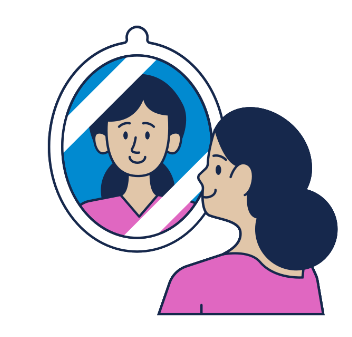Why is it important to use diverse books in our classrooms?
Classroom diversity is defined as everything that makes people different from each other, such as race, ethnicity, gender, sexual orientation, socioeconomic status, ability or religious beliefs. When using diverse resources students will find themselves, see themselves, and see other worlds and develop empathy for others in their community and the world. I like how Rudine Sims Bishop communicated the importance of using diverse books in classrooms. She stated that when students have diverse texts it provides students then the opportunity to:

Mirror-reflect and see themselves: This resonated with me because I want to provide education where students feel represented through the books I choose, meaning they see characters who look like them or come from similar backgrounds. This will help students feel included in the classroom community.
Window- look at other lives: I agree that diverse books expose you to cultures, traditions, and ways of life that may be different from your own. This exposure broadens your worldview, challenges stereotypes, and encourages critical thinking.


Sliding glass doors build empathy: Exposure to diverse perspectives helps develop empathy and understanding toward people from different cultures, races, ethnicities, religions, genders, sexual orientations, and abilities. It allows you to walk in someone else’s shoes and gain a deeper appreciation for the diversity of human experiences.
We need to use authentic resources in our classroom to properly represent diversity.
This week, we explored the use of authentic Indigenous books and resources, which is crucial for teachers. Educators must ensure that the materials they utilize for their teaching are authentic resources.
Authentic Resources or Text
Through Dr. Christopher Horsethief’s course (TELNIWT and Indigenous Education) we explored how some books/resources may be written well and tell an indigenous story but if it is by a non-indigenous person then it isn’t their story to tell. Indigenous resource/stories that we use in our teaching need to be written by an Indigenous person. As educators it is important to know about the resources we present to students.
How do we know if its an authentic resource?
When analyzing a book or resource, there are some simple ways to determine its authenticity. It is important to investigate the author, meaning most books provide information about the background of the author. When that information is not provided, doing a simple google search can help with authenticating the text and author. When questioning authenticity of a local resource check with the schools Indigenous Educational Worker, they may have knowledge of the resource or knows someone who may have the information needed.

Leave a Reply
You must be logged in to post a comment.